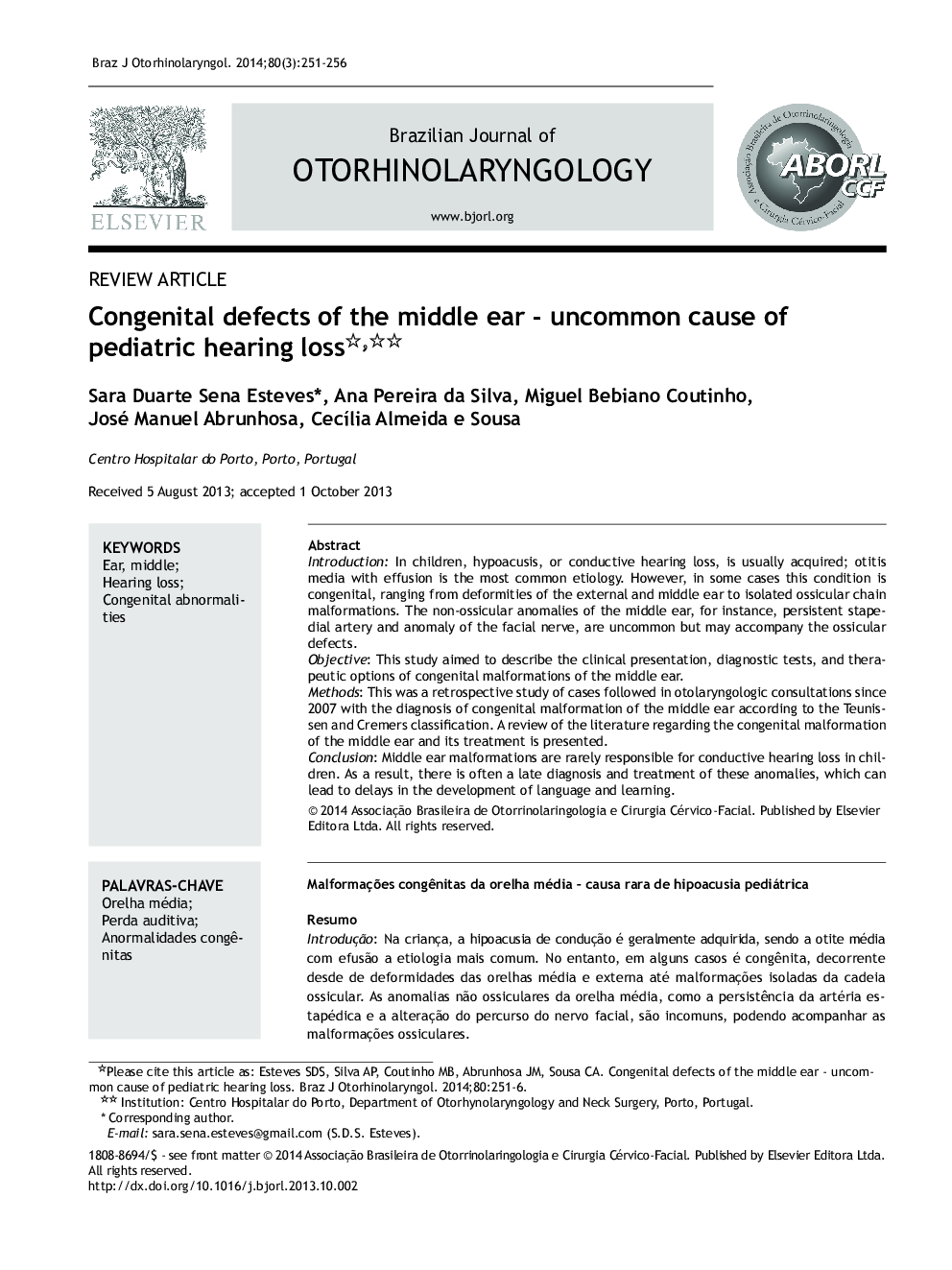| Article ID | Journal | Published Year | Pages | File Type |
|---|---|---|---|---|
| 4106373 | Brazilian Journal of Otorhinolaryngology | 2014 | 6 Pages |
Introductionin children, hypoacusis, or conductive hearing loss, is usually acquired; otitis media with effusion is the most common etiology. However, in some cases this condition is congenital, ranging from deformities of the external and middle ear to isolated ossicular chain malformations. The non-ossicular anomalies of the middle ear, for instance, persistent stape-dial artery and anomaly of the facial nerve, are uncommon but may accompany the ossicular defects.ObjectiveThis study aimed to describe the clinical presentation, diagnostic tests, and therapeutic options of congenital malformations of the middle ear.MethodsThis was a retrospective study of cases followed in otolaryngologic consultations since 2007 with the diagnosis of congenital malformation of the middle ear according to the Teunis-sen and Cremers classification. A review of the literature regarding the congenital malformation of the middle ear and its treatment is presented.ConclusionMiddle ear malformations are rarely responsible for conductive hearing loss in children. As a result, there is often a late diagnosis and treatment of these anomalies, which can lead to delays in the development of language and learning.
ResumoIntroduçãoNa criança, a hipoacusia de condução é geralmente adquirida, sendo a otite média com efusão a etiologia mais comum. No entanto, em alguns casos é congênita, decorrente desde de deformidades das orelhas média e externa até malformações isoladas da cadeia ossicular. As anomalias não ossiculares da orelha média, como a persistência da artéria es-tapédica e a alteração do percurso do nervo facial, são incomuns, podendo acompanhar as malformações ossiculares.ObjetivoEste estudo tem como objetivo descrever a apresentação clínica, os meios auxiliares de diagnóstico e opções terapêuticas das malformações congênitas da orelha média.MétodosOs autores apresentam um estudo retrospectivo de casos de malformação congênita da orelha média diagnosticados de acordo com a classificação de Teunissen e Cremers, acompanhados em consultas otorrinolaringológicas desde 2007. É também apresentada uma revisão da literatura sobre malformações congênitas da orelha média e seu tratamento.ConclusãoAs malformações da orelha média são raramente responsáveis pela hipoacusia de condução nas crianças. A demora no diagnóstico e tratamento pode levar a atrasos na linguagem e na aprendizagem.
